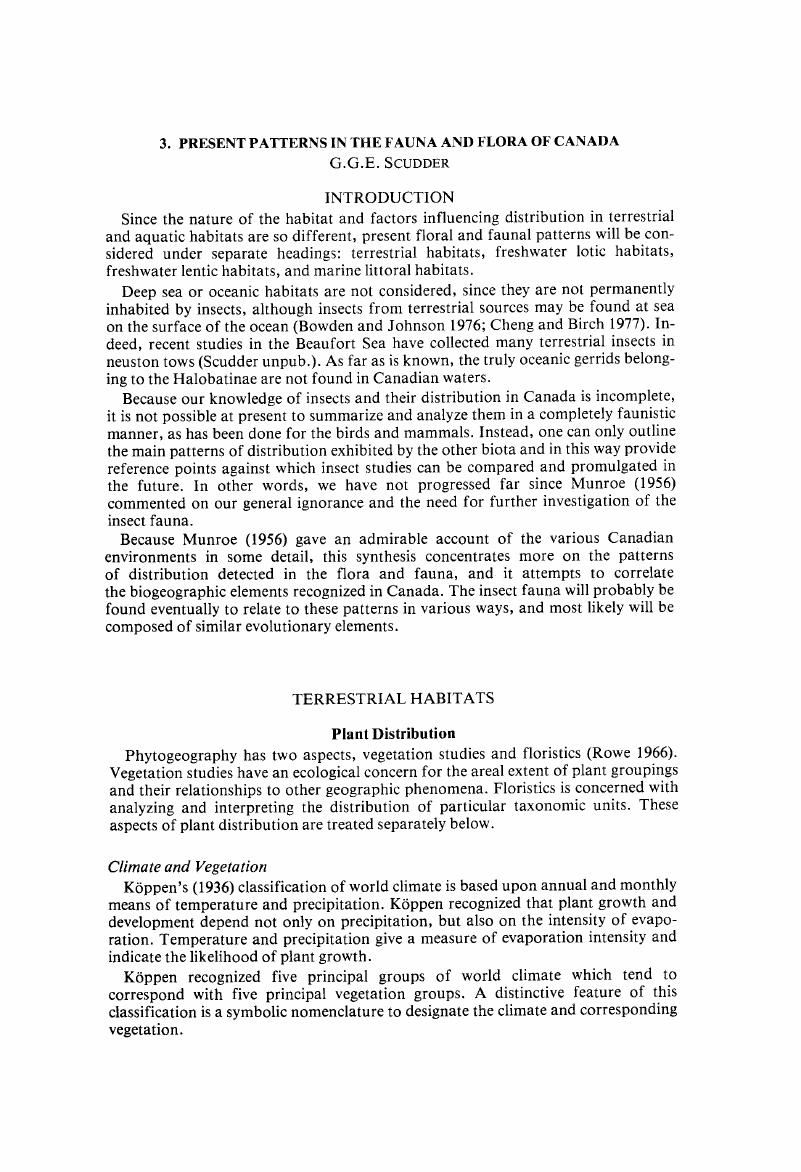Crossref Citations
This article has been cited by the following publications. This list is generated based on data provided by Crossref.
Hendrickson, Dean A.
1986.
CONGRUENCE OF BOLITOGLOSSINE BIOGEOGRAPHY AND PHYLOGENY WITH GEOLOGIC HISTORY: PALEOTRANSPORT ON DISPLACED SUSPECT TERRANES?.
Cladistics,
Vol. 2,
Issue. 2,
p.
113.
HERATY, J. M.
1986.
Pseudochakura (Hymenoptera: Eucharitidae), a New World genus of chalcidoids parasitic on ants.
Systematic Entomology,
Vol. 11,
Issue. 2,
p.
183.
Oswood, Mark W.
1989.
High Latitude Limnology.
p.
97.
Oswood, Mark W.
1989.
Community structure of benthic invertebrates in interior Alaskan (USA) streams and rivers.
Hydrobiologia,
Vol. 172,
Issue. 1,
p.
97.
Atlegrim, Ola
and
Sjöberg, Kjell
1996.
Response of bilberry (Vaccinium myrtillus) to clear-cutting and single-tree selection harvests in uneven-aged boreal Picea abies forests.
Forest Ecology and Management,
Vol. 86,
Issue. 1-3,
p.
39.
Elias, Scott A.
2002.
Climatic tolerances and zoogeography of the late Pleistocene beetle fauna of Beringia.
Géographie physique et Quaternaire,
Vol. 54,
Issue. 2,
p.
143.
Cannings, Robert A.
2006.
Geoffrey G.E. Scudder: zoologist, conservationist, educator.
The Canadian Entomologist,
Vol. 138,
Issue. 4,
p.
ix.
Spence, John R.
Langor, David W.
Jacobs, Joshua M.
Work, Timothy T.
and
Volney, W. Jan A.
2008.
Conservation of forest-dwelling arthropod species: simultaneous management of many small and heterogeneous risks.
The Canadian Entomologist,
Vol. 140,
Issue. 4,
p.
510.
Behan-Pelletier, Valerie
and
Schatz, Heinrich
2010.
Trends in Acarology.
p.
97.
Savard, Michel
Larochelle, Majella
and
Perron, Jean-Marie
2017.
Découverte de la cordulie tricoteuse (Somatochlora filosa) au Canada et reconsidération de la cordulie linéaire (Somatochlora linearis) au Québec, deux espèces rhéophiles de libellules.
Le Naturaliste canadien,
Vol. 141,
Issue. 2,
p.
42.
Gregoire Taillefer, Amelie
Wheeler, Terry A.
and
Didham, Raphael
2018.
Tracking wetland community evolution using Diptera taxonomic, functional and phylogenetic structure.
Insect Conservation and Diversity,
Vol. 11,
Issue. 3,
p.
276.
Bowser, Matthew
Brassfield, Rebekah
Dziergowski, Annie
Eskelin, Todd
Hester, Jennifer
Magness, Dawn
McInnis, Mariah
Melvin, Tracy
Morton, John
and
Stone, Joel
2020.
Towards conserving natural diversity: A biotic inventory by observations, specimens, DNA barcoding and high-throughput sequencing methods.
Biodiversity Data Journal,
Vol. 8,
Issue. ,
SINCLAIR, BRADLEY J.
2023.
Revision of New World species of Roederiodes Coquillett (Diptera: Empididae: Clinocerinae).
Zootaxa,
Vol. 5301,
Issue. 3,
p.
336.



